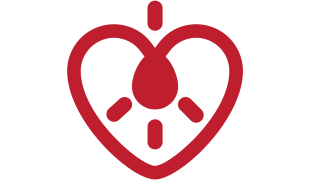- 5916
- 429
- 4
- 4
- 0
- Help Ukraine
About the solution
The use of a classic accessible bathroom usually involves several successive transfers (to the toilet, to the shower or bath, etc.). Furthermore, it does not provide a comfortable solution for drying after bathing. This can be solved by a platform where on one side the person washes under the shower and then slides across to the other side, which is dry, where the person can get dry and eventually get dressed. If the toilet is at one end of this platform, one can perform all personal hygiene activities with only two transfers (from the chair to the platform, from the platform for the chair).
In the case of a person with amputation or atrophy of the lower limbs (Polio, for example), it is even more comfortable to raise a shower base and install it at the platform level (the same level of the wheelchair), since the person tends to bathe sitting with legs crossed (and it is not comfortable having them hanging as it happens when one is sitting on a shower bench). Of course, this solution is "tailor-made" and is not easily usable by other family members.
The bathroom of the photos below had several constraints from the point of view of materials (wood floor, fragile wall) and dimensions: it was intended to make a bedroom with walk-in closet and a bathroom, with circulation space for a wheelchair, in an area of about 3,80cmx4,50cm (indicative dimensions and drawing). The concept is much easier to achieve with more common materials and in a larger space.
This solution shall not include mention to the use of drugs, chemicals or biologicals (including food); invasive devices; offensive, commercial or inherently dangerous content. This solution was not medically validated. Proceed with caution! If you have any doubts, please consult with a health professional.
-
-
220
-
0
-
2159

Adapted and high mirror toys to encourage her daughter to put
CAREGIVING
(SELF)-CARE: GROOMING: Personal grooming, such as combing hair or shaving
STANDING UP: Standing up from a seated position
Cri du Chat Syndrome
Strategy/Tip
Restoring mobility
Promoting self-management
Preserving Organ Function
Managing Neurological Disorders
Promoting inclusivity and social integration
Maintaining Balance and Mobility
Restoring Blood Circulation
Preventing (Vaccination, Protection, Falls, Research/Mapping)
Raise awareness
Caregiving Support
Child and Adolescent Psychiatry
General and Family Medicine
Neurology
Pediatrics
Physical Medicine and Rehabilitation
Portugal
-
-
-
292
-
0
-
3238

Students create device to make fatherhood easier for disabled father
CAREGIVING
MOVING IN A WHEELCHAIR: Moving using a wheelchair.
Cerebral Palsy
Assistive Technology access
Walking Aid (wheelchair/walker/crutches)
Restoring mobility
Enhancing health literacy
Promoting inclusivity and social integration
Support on Puerperium/Post-childbirth
Raise awareness
Caregiving Support
General and Family Medicine
Neurology
Physical Medicine and Rehabilitation
United States
-
-
-
481
-
0
-
6063

Wheelchair user creates mobility app
MOVING IN A WHEELCHAIR: Moving using a wheelchair.
Paralysis
App (Including when connected with wearable)
Restoring mobility
Promoting self-management
Managing Neurological Disorders
Building Supportive Community Relationships
Promoting inclusivity and social integration
Preventing (Vaccination, Protection, Falls, Research/Mapping)
Raise awareness
Caregiving Support
Internal Medicine
Neurology
Orthopedics
Physical Medicine and Rehabilitation
Rheumatology
Belgium
-
 en
en